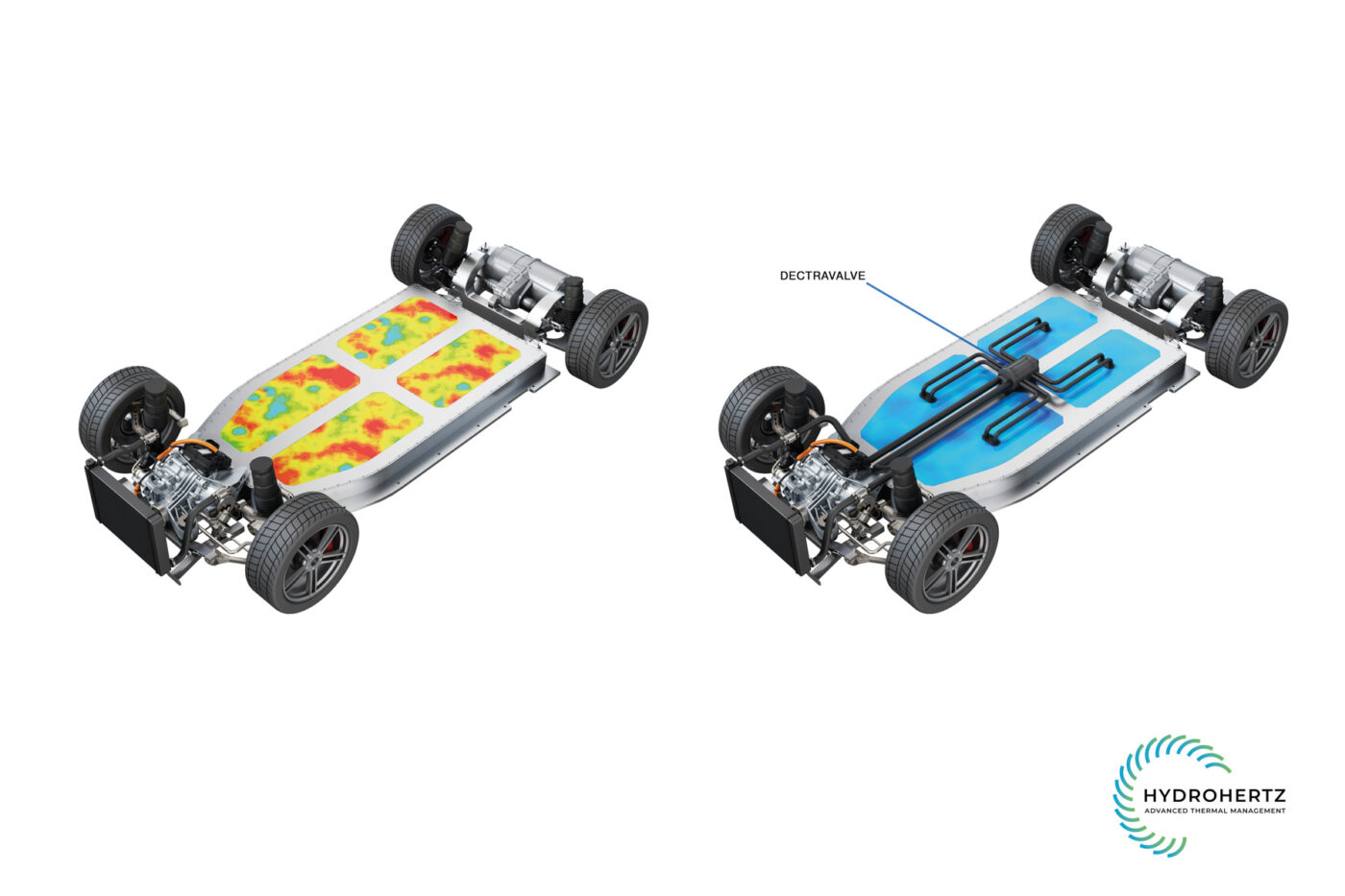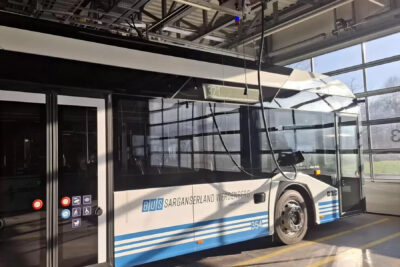British startup Hydrohertz presents new battery cooling system
Hydrohertz’s patented technology is called Dectravalve and is a compact, intelligent multi-zone valve system designed to enable highly precise heating, cooling or energy recovery of an EV battery. The key approach is that the Dectravalve can be used to set up several independent temperature zones within a battery pack.
Cooling plates previously used under (and occasionally above) the cells or modules attempt to regulate the temperature of the battery pack as a whole. Our technical deep dive into the new electric Cayenne showed the challenge this poses for engineers in high-performance vehicles: Porsche has developed complex cooling channel designs to compensate for the difference between the passenger side (with fresh, cold coolant) and the driver’s side (with already heated coolant and lower temperature absorption). Hydrohertz’s Dectravalve solution would divide the battery pack into different zones and control them individually.
In an HPC charging test conducted with independent battery experts from the Warwick Manufacturing Group (WMG), Hydropack reports that a 100 kWh LFP battery equipped with Dectravalve kept its hottest cell below 44.5 degrees Celsius – at up to 350 kW charging power. The charging time from ten to 80 per cent is said to have been around ten minutes for the 100 kWh pack. Impressive from a thermal management perspective: the temperature difference across the entire pack is said to have been only 2.6 degrees Celsius.
Safety and durability are also said to benefit
As a comparative value “to typical fast-charging conditions in today’s electric vehicles,” Hydropack cites peaks of up to 56 degrees in the cells and temperature differences of up to 12 degrees across the pack. “Once cells push beyond 50°C, charging power must be throttled to avoid ‘lithium plating’ (internal damage to cells) and long-term damage to the pack, meaning fast charging tapers off much earlier than advertised, significantly increasing the overall charge time,” the statement said. At a maximum of 44.5 degrees, however, the pack equipped with the new system never reached this mark and thus did not leave the optimal range – even though it was pushed to the limit. The lower temperature difference is also important here: if even one cell reaches the critical temperature, the power must be throttled. In the 50-degree example, this means that with a difference of up to 12 degrees, the coolest cells were only at 38 degrees and could have continued charging at a higher power for some time.
At the same time, there should also be a major advantage outside of fast charging: since the cells are also operated at optimum temperatures while driving, battery efficiency should be increased, which should result in up to ten per cent more range in real driving conditions, according to the British company’s calculations. “With a typical mid-sized EV that could mean another 30-40 miles, providing more usable driving distance per charge, reducing EV running costs and energy consumption,” the company says – equivalent to 48 to 64 kilometres.
And since the cells are exposed to maximum temperatures for less time, typical risks associated with overheating – such as the aforementioned lithium plating – are also reduced. This is intended to increase safety and extend service life. And since this is independent of cell chemistry, Dectravalve is also suitable for future battery systems, according to Hydropack.
“The Dectravalve solves a fundamental problem of EV battery thermal management systems – how to achieve true independent zone control of temperature without the complexity, weight, and energy waste of multiple valve arrays,” says Hydrohertz CTO Martyn Talbot. “Our innovation is elegantly simple: a single, digitally controlled unit that can manage four or more cooling zones separately. With Dectravalve, each cooling zone is completely independent, so coolant flows from the pump to the battery and back again in a specific loop. There are no unwanted, efficiency-sapping, leaks of warm coolant between zones.”
Paul Arkesden, CEO of Hydrohertz, added: “This is a cost-effective solution that delivers game-changing results: consistent 10-minute charging, longer range, extended battery life, and enhanced safety. For OEMs, this means better, more useable EVs now, without waiting for the next generation of battery technology. But when that technology does arrive, Dectravalve will optimise it too. The impact for both car makers and consumers is set to be transformative.”
Source: Info via email, hydrohertz.com
This article was first published by Sebastian Schaal for electrive’s German edition.





0 Comments